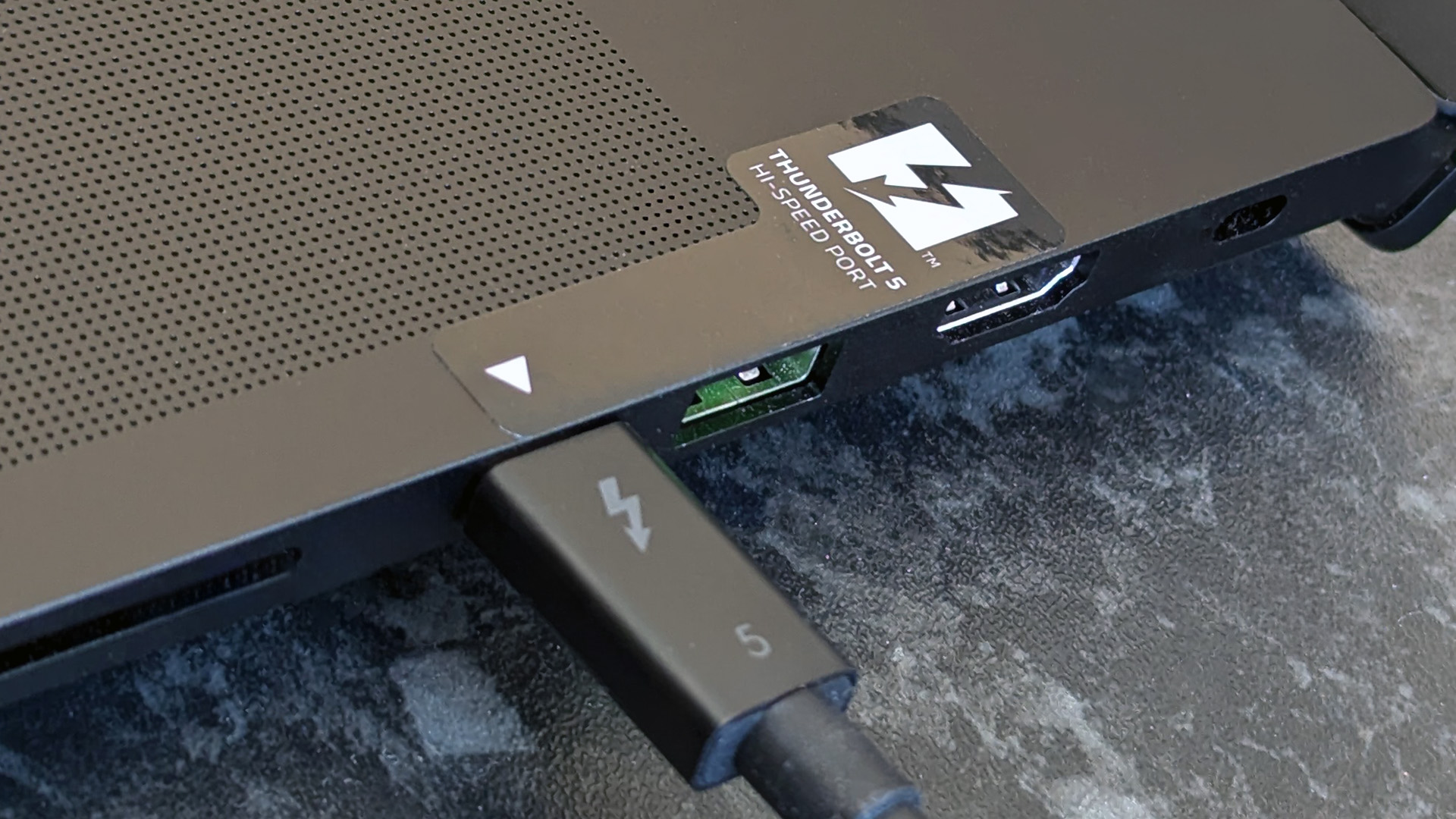
Thunderbolt is currently the leading physical hookup you'll find for your PC. This Intel technology has been around since 2010/2011, with various iterations climbing sequentially up to Thunderbolt 4.
Although Thunderbolt 4 was only revealed in 2020 and first hit laptops with Intel's 11th Gen Tiger Lake platform (since moving on to Alder Lake systems), rumblings of a next-gen Thunderbolt spec have been heard since 2021 when an Intel exec accidentally leaked some details.
Here's what you need to know about the next best port technology.
What's new with Thunderbolt 5?
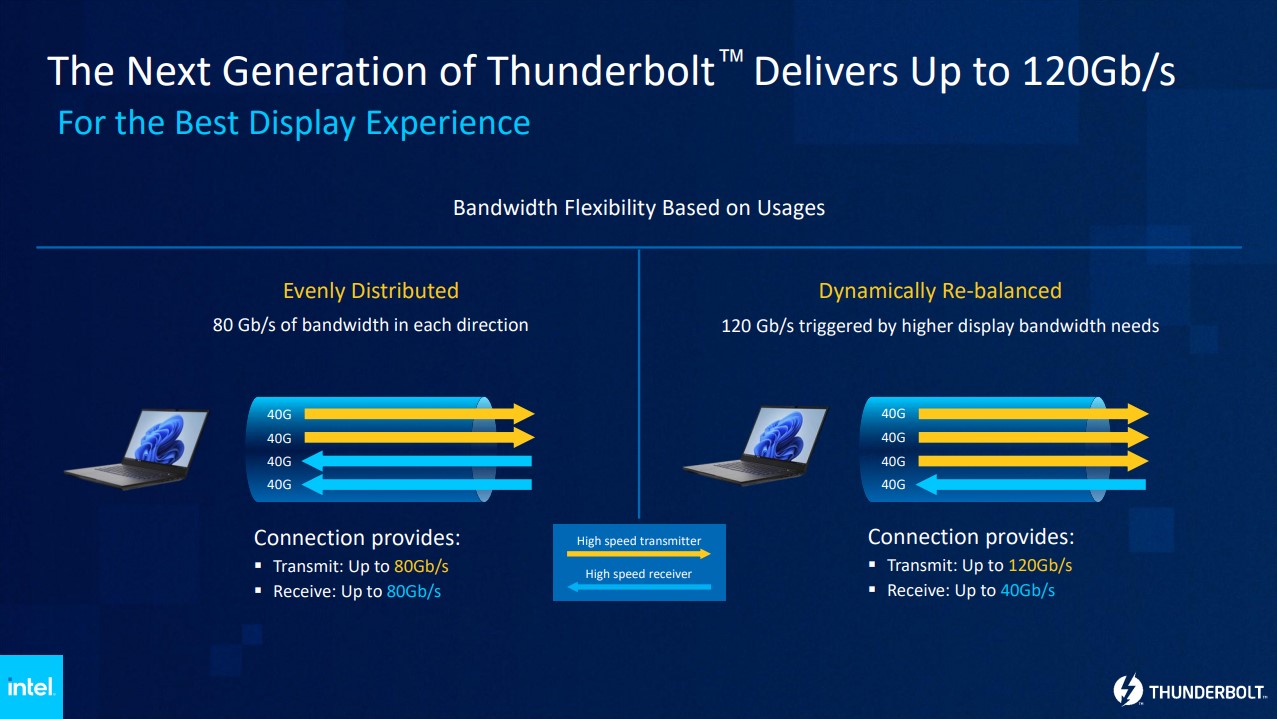
Intel has unveiled its new Thunderbolt technology that will eventually take over for Thunderbolt 4. It hasn't officially been named Thunderbolt 5, instead going with a "next-gen" moniker. The new Thunderbolt tech will rely on the new USB4 v2 data and DisplayPort 2.1 standards, delivering incredible performance for gamers and creators who need massive bandwidth through one cable.
Next-gen Thunderbolt will offer bi-directional bandwidth up to 80Gb/s across four lanes. If required, it will be able to swap one lane's direction to achieve 120Gb/s transmit speeds and 40Gb/s receive speeds, ideal for high-res monitors. Intel has confirmed that the new technology uses PAM3 signal modulation, as was suspected following the lab leak last year.
The new Thunderbolt tech is still in its prototype stage, and Thunderbolt 4 will continue to be the most modern standard until Intel officially names and launches the product.
How does next-gen Thunderbolt compare to Thunderbolt 4?
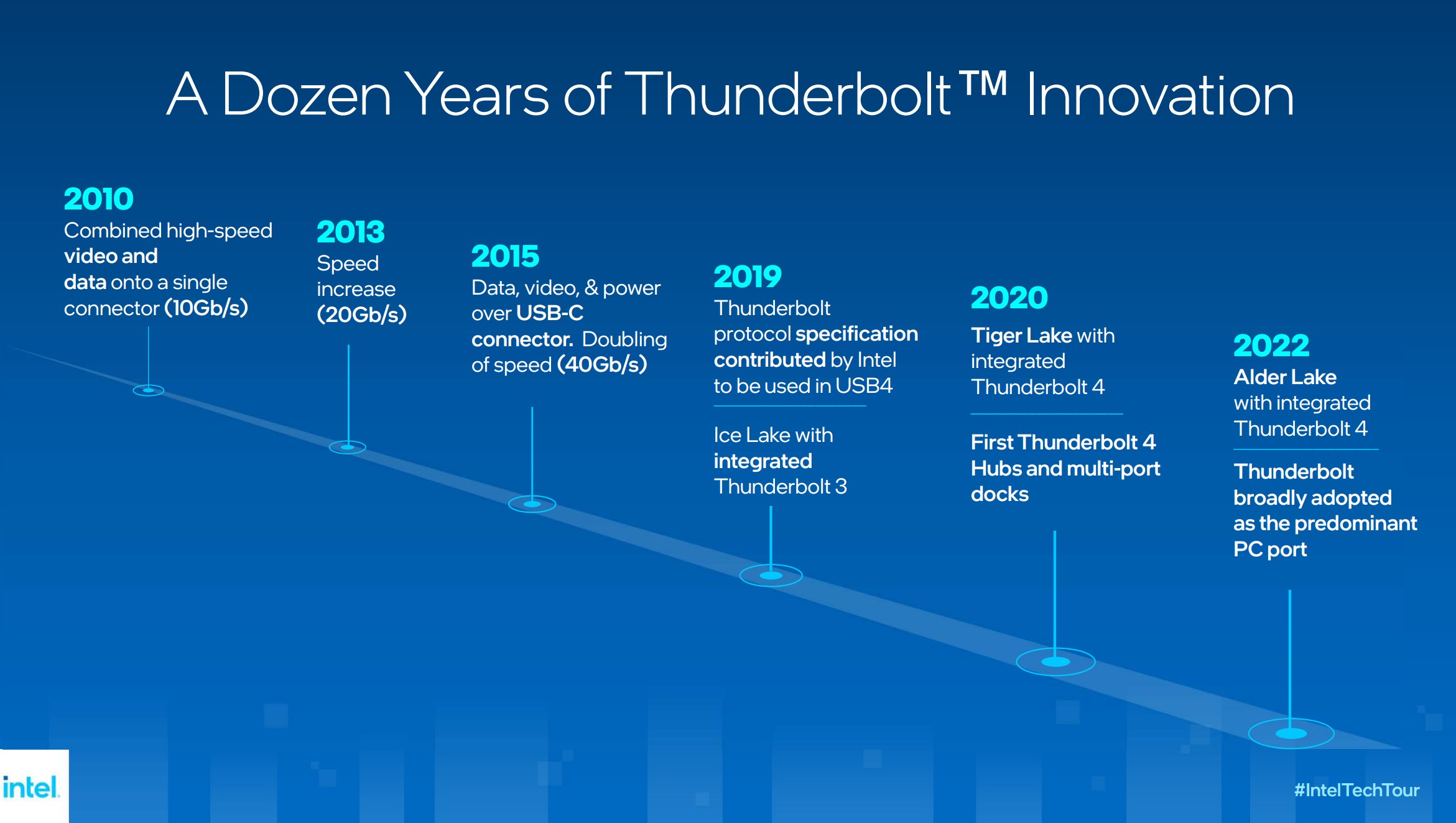
Thunderbolt 4 has been around since 2020 and is the current best connection for laptops. Like Thunderbolt 4, next-gen Thunderbolt will combine PCIe, DisplayPort, and power to deliver everything your laptop needs with one cable. Thunderbolt 4 currently offers up to 40Gb/s throughput, PCIe bandwidth up to 32Gb/s, and extra protection against connected threats.
Get the Windows Central Newsletter
All the latest news, reviews, and guides for Windows and Xbox diehards.
Intel is doubling (and even tripling) bandwidth with its next-gen Thunderbolt tech, as well as doubling the PCIe data throughput. That's a huge leap, but it's not the first time that Thunderbolt's bandwidth has been doubled.
The original Thunderbolt was capable of 10Gbps speeds, doubling to 20Gbps just three years later with Thunderbolt 2. Thunderbolt 3 again doubled up to 40Gbps two years later.
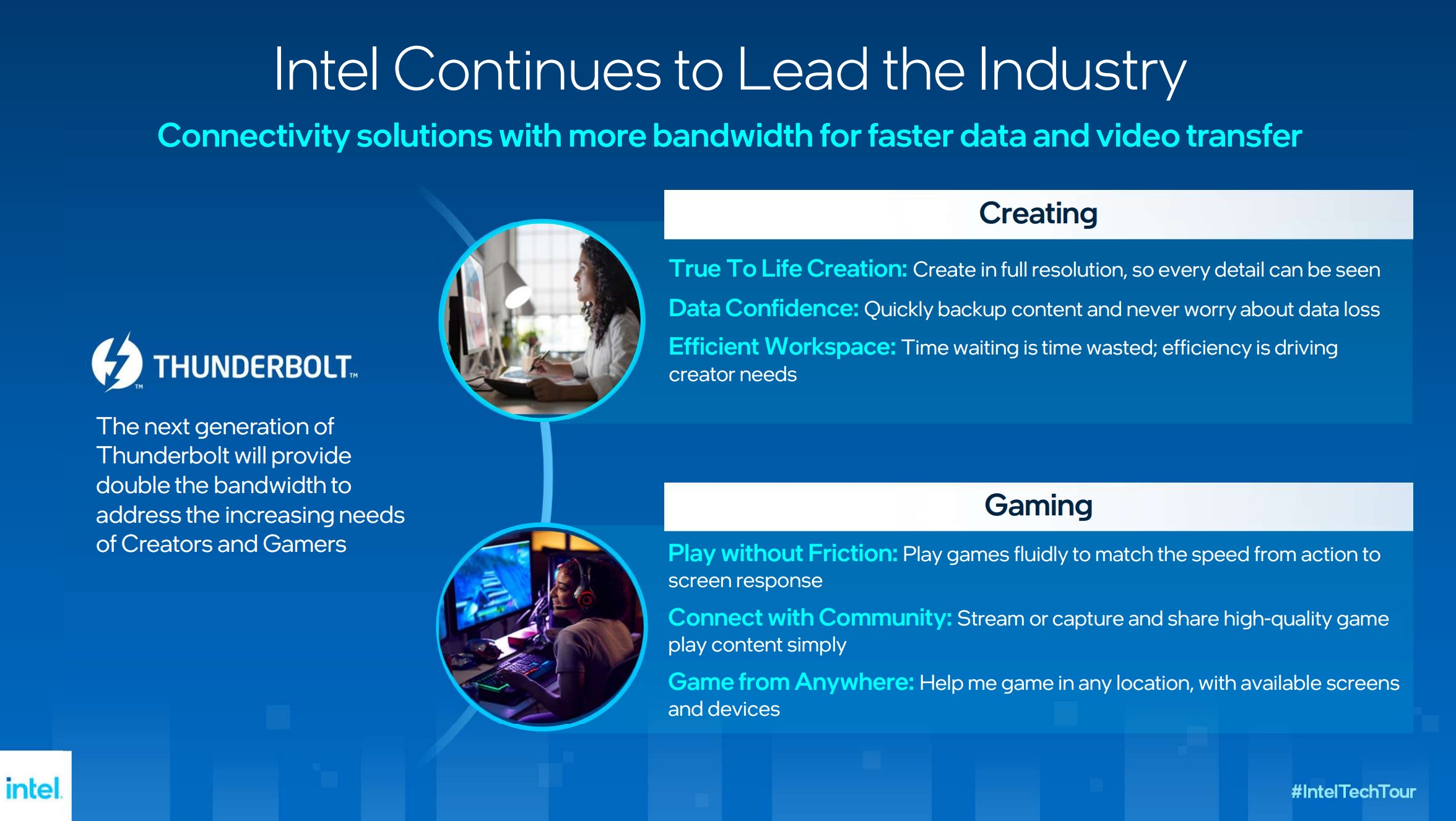
Thunderbolt 4 kept the same 40Gbps bandwidth as Thunderbolt 3, but it made advancements in other areas. It doubled video support, allowing for dual 4K displays at a 60Hz refresh rate each from a single port. It doubled the minimum bandwidth from 16Gbps up to 32Gbps. And it added some new threat detection technology to better protect your PC against compromised accessories being connected.
Powerful Thunderbolt 4 docking stations are capable of providing three downstream TB4 ports, as well as a host cable measuring up to two meters. Daisy-chaining, charging, and multi-port setups are all possible with the right Thunderbolt 4 hardware, and that's not expected to change with Thunderbolt 5.

On a recent trip to Israel to visit the Intel fabrication plant during Intel's Tech Tour 2022, Executive Editor Daniel Rubino was shown a quick video of Thunderbolt 5 being tested using PCIe and an external SSD. I saw the same prototype silicon being used in our pre-brief presentation, which leads me to believe next-gen Thunderbolt has a ways to go before it sees an official release.
If you're interested in reading more about Thunderbolt technology, our sibling article regarding everything you need to know about Thunderbolt 4 has a lot more information.
What laptops include Thunderbolt 5?
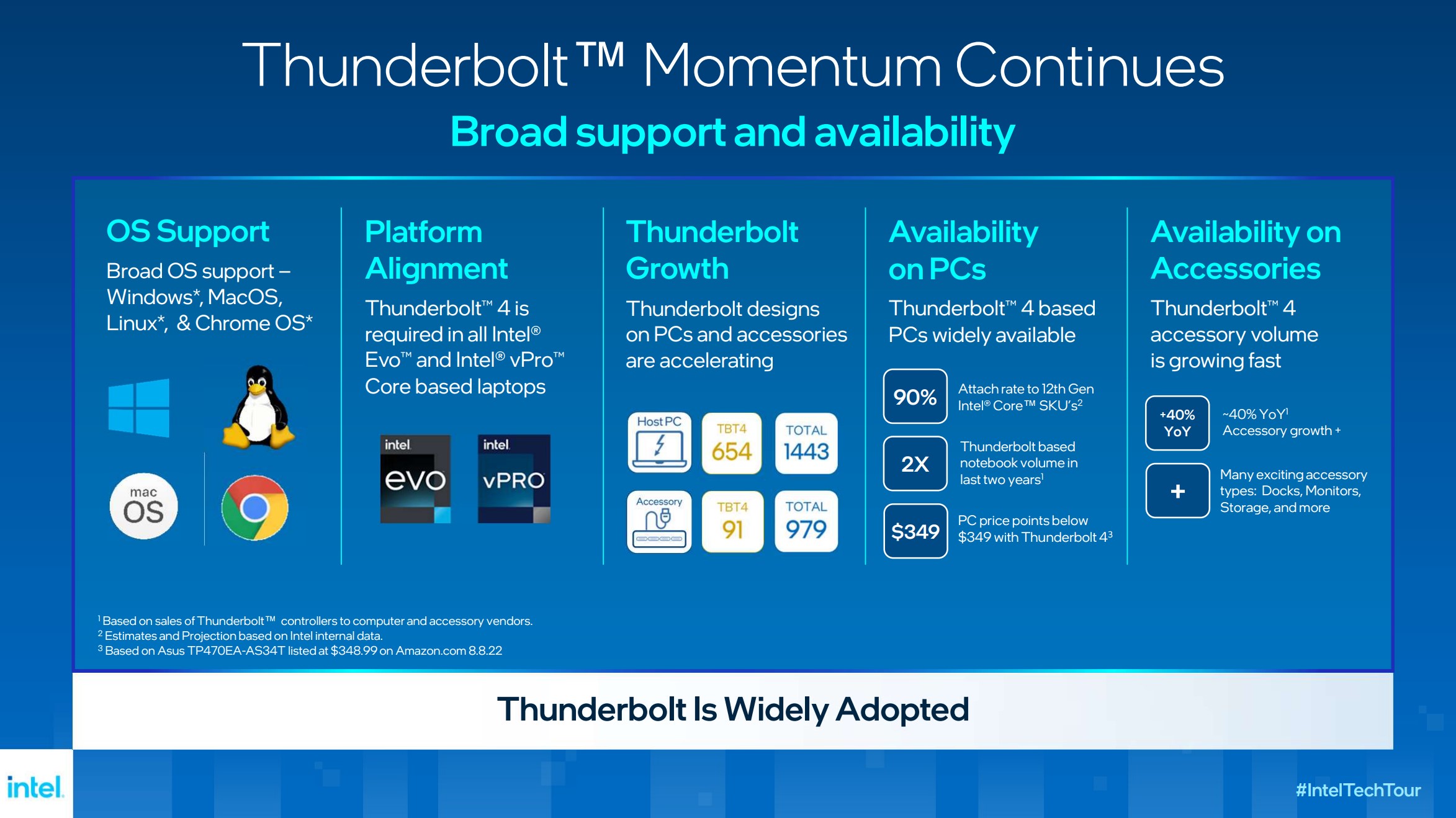
Thunderbolt 5 is still in its infancy stage. There's so far no news regarding when it will be coming to PCs. When Thunderbolt 5 does get an official release, it's expected that Intel's latest mobile platform in the best Windows laptops will get the upgrade.
Until we see an official announcement and release, Thunderbolt 4 is the next best thing. Intel claims that 90% of laptops with 12th Gen Core CPUs have Thunderbolt 4, which doubled the previous count in recent years.
PCs aren't the only hardware with Thunderbolt 4 that have seen growth, as there's been a 40% uptick in accessories year over year. This growth includes docks, hard drives, external GPU enclosures, capture cards, monitors, and more.
And while many budget laptops still stick with plain USB-C, you can find some genuinely affordable devices with the upgraded port.
Do note that the AMD platform is still a dry spot for Thunderbolt. AMD mostly sticks with a USB4 alternative due partly to the testing fees required for official Intel certification.

Cale Hunt brings to Windows Central more than eight years of experience writing about laptops, PCs, accessories, games, and beyond. If it runs Windows or in some way complements the hardware, there’s a good chance he knows about it, has written about it, or is already busy testing it.
